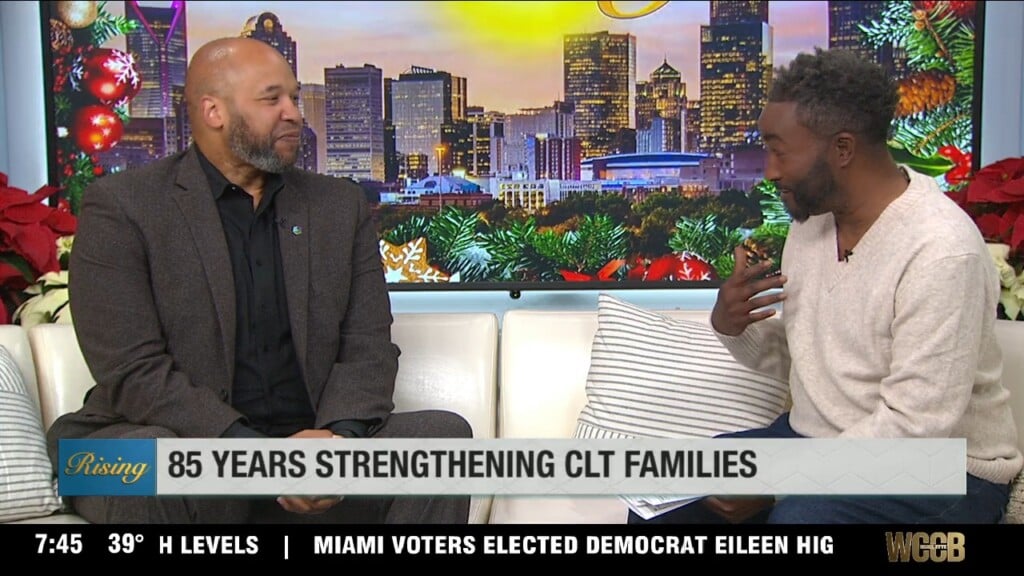Sam Belnavis Blazes Path For Black People In NASCAR
CHARLOTTE, N.C. — Before Michael Jordan ventured into race team ownership in NASCAR, Sam Belnavis broke the sports barrier in 2003.
Belnavis was the first African-American majority owner to run a full season in the NASCAR Cup Series.
“”I’m proud of the fact that the good Lord put me on this earth,” said Belnavis “And had some support for me in racing.”
The 81 year-olds journey to the top of NASCAR was complete with setting many firsts as a Black man in America. Belnavis grew up in New York in the 1940’s and loved sports, especially excelling in track and field. After college, Belnavis went to work for sears.
“I started off as a trainee with Sears Roebuck and Company, the first management trainee at Sears Management Training Program.”
Belnavis went from being the first African-American hired into the Sears Management Program, to the first to become Director of Sports Marketing for Miller Brewing. He quickly became known as a marketing guru, having a keen eye for creating partnerships. Belnavis worked with the NBA, NFL, Penn Relays, and boxing, but NASCAR really caught his eye.
“NASCAR grabbed him,” said Belnavis’ daughter Cherise Belnavis. “I don’t know if it was the speed, I’d like to think that because my dad thrived in environments where he had to fight, I think that also drew him. Like, we’re not here today, but we’re going to be here, and I’m going to make sure I play a role in that we have representation, I think that fueled him.”
Belnavis signed Bobby Allison to a sponsorship deal with Miller and saw success nearly immediately. Allison won the Cup Championship in 1983 driving the number 22 Miller High Life.
It became a family affair for Belnavis when he moved the family down to Charlotte.
“Can’t be cachet and say it was interesting, it was more than that,” said Belnavis. “I got my children involved, they celebrated their birthdays on the race track.”
Belnavis was diagnosed with Lewy Body dementia three years ago but he still has fond memories of the sport, despite the hardships of trying to integrate NASCAR.
“I’m sure he felt really lonely a lot of times,” said Cherise. “But I do know for a fact that he felt like it was his responsibility to change that landscape.”
After experiencing success on the marketing side of NASCAR with Miller, Belnavis decided to use the relationships he created to get into race team ownership.
“There wasn’t that much guidance as to what it takes to own a race team,” said Belnavis. “It takes a lot of things, and that kind of set me like I’d like to try that, I can manage, I can talk. That was the vision that I took on.”
History was made in 2003 when BelCar Racing ran the full season in the No.54 National Guard driven by Todd Bodine.
“I would venture to say it was probably one of his proudest moments,” Cherise recalled. “Outside of his grandchildren being born, because of everything it took to get there, and the times where he didn’t think it was going to work.”
BelCar Racing shut down following that season after the National Guard chose to sponsor a ride with Roush racing instead. But Belnavis’ profile within the sport grew even more when he became the Chief Diversity Officer for Roush Fenway racing. He stayed in that role until retirement 6 years ago.
Over the years NASCAR has seen improvements in its diversity efforts, and Belnavis is a major key to that.
“I’ve really appreciated Sam’s vision on everything, and how he’s gone about things,” said Cup Series driver Bubba Wallace. “He wants to see the word “minority” gone because it’s the majority now. He’s always pushed for that, and we’re working for that, but it’s a lot of work that needs to be done, but just an incredible human being for sure.”
“It’s not wanting to let people like Sam down,” NASCAR’s VP of Diversity and Inclusion Brandon Thompson said. “And understanding that to be able to push the industry forward and that his work hasn’t been in vain.”
Belnavis keeps up with everything nascar and is proud of the firsts he set, to help usher in change for the better.
“It’s just a wonderful sport, we need to put a little more into it to make it more than just wonderful, fantastic.”





